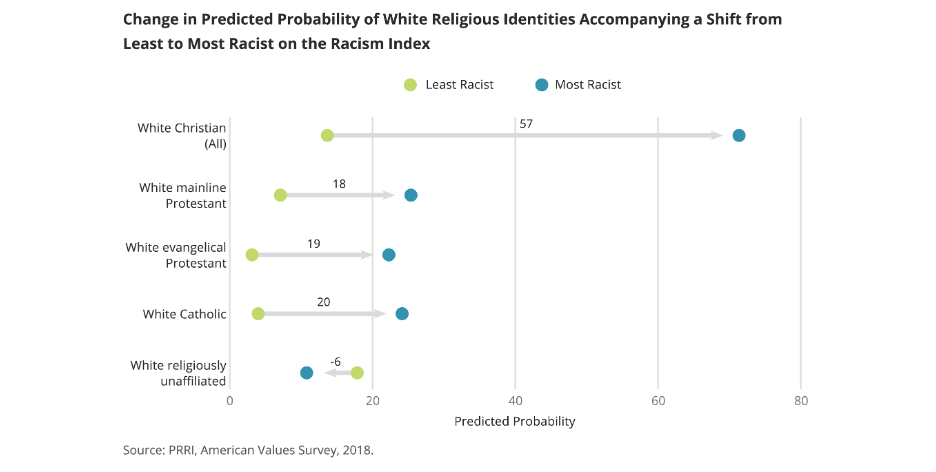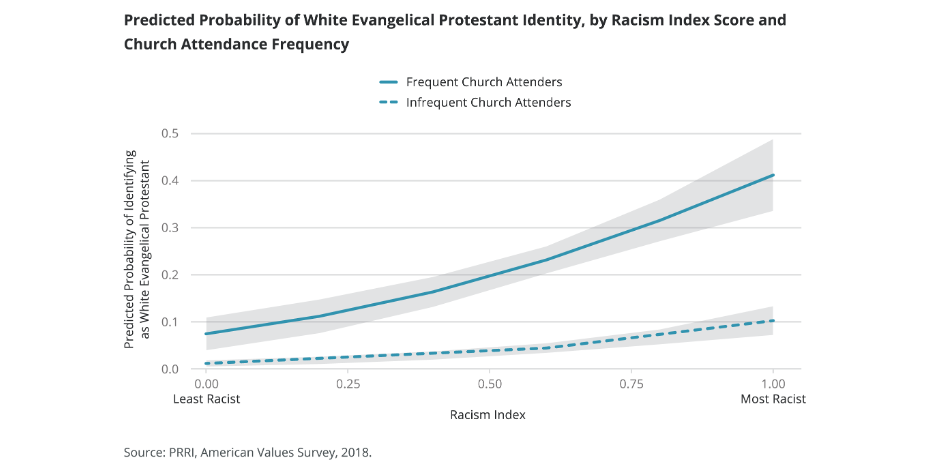In 1979, “When a Stranger Calls” became a surprise box-office success. The plot, which drew on a common folk legend, wasn’t original, but the harrowing first 23 minutes of the film created a cult following and the film is still considered to have one of the scariest opening sequences of all time.
Jill Johnson has just put the children she is babysitting to bed. As she settles in to await the parents’ return, she receives an ominous phone call from an unidentified man who asks if she has checked on the children. Alarmed, Jill calls the police, who instruct her to keep the caller on the line so they can trace the call. The man calls back, and the call is traced. The police contact her immediately with a terrifying message: “Jill, this is Sergeant Sacker. Listen to me. We’ve traced the call. … it’s coming from inside the house.”
When analysts contemplate the rise of forces like white supremacy and nationalism in the United States, they often assume these forces thrive either outside of or in the wake of the weakening of traditional Christian institutions. But both historical analysis and contemporary public opinion data demonstrate that such anti-democratic views regularly find a comfortable home among white Christians — not only among white evangelical Protestant Christians but also among white non-evangelical/mainline Protestants and white Catholics.
“Among white Americans, there is evidence that higher participation in churches is positively correlated with holding more racist attitudes.”
Moreover, among white Americans, there is evidence that higher participation in churches is positively correlated with holding more racist attitudes and supporting anti-democratic, anti-pluralistic ideologies like nativism, white Christian nationalism and so-called Replacement Theory.
Statistical models
In my last book, White Too Long: The Legacy of White Supremacy in American Christianity, I asked a straightforward question: “Does holding more racist attitudes increase the likelihood of identifying as a white Christian?” To sort this out, I turned to a series of statistical models to examine the relationship between holding racist attitudes and identifying as a white Christian.
Specifically, I examined how attitudes about a range of issues such as support for Confederate monuments, denials of the present effects of the history of slavery and racial discrimination, denials of present racial inequalities, and racial resentment (operationalized in a composite Racism Index consisting of 15 questions) predicted three different white Christian identities: white evangelical Protestant, white non-evangelical/mainline Protestant, and white Catholic. For comparison, I also used a fourth model to predict being white and religiously unaffiliated.
The results were striking. Even with a range of the statistical controls in place, the Racism Index remained an independent predictor for each of the three white Christian subgroups individually, and — in the opposite direction — for religiously unaffiliated whites.
In the model, when the Racism Index shifts from least racist to most racist (a move from zero to one), that shift independently makes an average respondent 18 percentage points more likely to identify as white mainline Protestant, 19 percentage points more likely to identify as white evangelical Protestant, and 20 percentage points more likely to identify as white Catholic. By contrast, the corresponding shift in the Racism Index has only a very weak negative effect on white religiously unaffiliated identity.

Church attendance link
A look at the role of church attendance levels casts further light on the relationship between holding racist attitudes and white Christianity. Some have argued, in defense of white Christian churches and institutions, that this link is driven primarily by those who claim a Christian identity but who have little connection to Christian churches. There’s even an acronym for this theory: Christians in Name Only, or CINO.
Those loosely connected white Christians, the theory goes, are more likely to hold racist views, while those who attend religious services more often — with more exposure to sermons, Sunday school, Bible study and other forms of Christian discipleship that happen within congregations — are more likely to be in solidarity with their African American brothers and sisters.
“We find no evidence that higher church exposure has a mitigating effect on racist attitudes.”
But we find no evidence that higher church exposure has a mitigating effect on racist attitudes; if anything, the opposite is true.
- For white Catholics, there are no significant differences between frequent (weekly or more) and infrequent (seldom or never) church attenders: a move from least racist to most racist on the Racism Index makes frequent and infrequent church attenders nearly equally more likely to identity as white Catholic (21 percentage points and 19 percentage points respectively).
- For white non-evangelical/mainline Protestants, infrequent church attenders see a bigger boost in probability of identification related to holding more racist views (22 percentage points), but the identification boost due to racist views among frequent church attenders is also positive and significant (12 percentage points).
- For white evangelical Protestants, there is, strikingly, a stronger boost in likelihood of affiliation due to racist attitudes among frequent church attenders than among infrequent church attenders. A move from least racist to most racist on the Racism Index makes frequent church attenders 34 percentage points more likely to identify as a white evangelical Protestant, compared to an increase of only 9 percentage points among infrequent church attenders. In other words, holding racist views is nearly four times as predictive of white evangelical Protestant identity among frequent church attenders as among infrequent church attenders.
Same view from the other direction
Reversing the direction of the analysis above also helps us confirm the strong relationship between racist attitudes and white Christian identity. Using the same control variables in the models above, being affiliated with each white Christian identity is independently associated with a nearly 10% increase in racist attitudes, compared to those who do not identify as a white Christian: 9% for white evangelical Protestant identity, 8% for white non-evangelical/mainline Protestant identity, and 9% for white Catholic identity. By contrast, there is no significant relationship between white unaffiliated identity and holding racist attitudes.
Notably, looking at the analysis in this direction, church attendance has no significant impact on the relationship between white Christian identities and holding racist views, generally confirming the findings of the analysis above.
In other words, there is no evidence that going to church every week, at least at the churches white Christians are currently attending, makes a white Christian any less likely to be racist. Whatever Christian formation and discipleship is happening is not impacting the white supremacist attitudes that are deeply embedded in white Christian institutions of all types.
“There is no evidence that going to church every week, at least at the churches white Christians are currently attending, makes a white Christian any less likely to be racist.”
The relationship, then, between the Racism Index and white Christian identity is a broad two-way street: an increase in racist attitudes independently predicts an increase in the likelihood of identifying as a white Christian, and identifying as a white Christian is independently associated with an increased probability of holding racist attitudes.
Data upheld again
More recent analysis confirms these patterns. The recent PRRI/Brookings Christian Nationalism Survey, conducted in December 2022 and released in early 2023, found similarly a strong positive correlation between holding Christian nationalist views and frequency of church service attendance. Half of white Christians who attend religious services weekly or more are either Christian nationalist adherents or sympathizers, compared to only 18% of whites who seldom or never attend. And white Americans who attend religious services weekly or more are four times more likely than those who seldom or never attend to be Christian nationalist adherents (21% and 5% respectively).

Among white Americans, those who attend religious services weekly or more are also significantly more likely than those who seldom or never attend to hold favorable views of Donald Trump, even after his tacit support for white supremacists, election denialism and his attempt to hold onto power by encouraging the violent insurrection on January 6 (51% vs. 32% in a March 2023 PRRI survey).
Moreover, as the chart below shows, white Americans who are frequent church attenders are, by double digits, more likely to hold attitudes supportive of nativism, white Christian nationalism (nationalist views that are tied to an ethno-religious European Christian identity), and so-called Great Replacement Theory.

These findings suggest any search for explanations of the rising appeal of anti-pluralistic, anti-democratic sentiment that overlooks white Christian churches will miss an important, and troubling, source of the threat.
If this sentence seems shocking on its face, a sober look at the historical record reveals Western Christianity’s vulnerability to this outcome. At least in the U.S. and Western European contexts, where Christianity was intertwined with and provided the primary moral justification for the project of colonialism, a sense of ethno-religious identity and superiority has been built into its cultural DNA and has replicated itself across generations via its institutions and practices.
This troubling fact — that the threat is coming from inside the house — is perhaps the most serious challenge for the future of Western pluralistic democracies.

Robert P. Jones (Photo by Noah Willman)
Robert P. Jones is CEO and founder of PRRI and the author of White Too Long: The Legacy of White Supremacy in American Christianity, which won a 2021 American Book Award.
This column originally appeared on Robert P. Jones’s substack #WhiteTooLong.
Related article:
PRRI’s Structural Racism Index attempts to quantify racist beliefs| Analysis by Mark Wingfield



